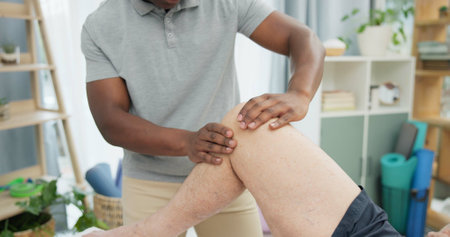1. Introduction to Telehealth in the U.S.
Telehealth has transformed the way Americans access healthcare, making it easier for people to connect with medical professionals without leaving their homes. Over the past decade, telehealth services have grown rapidly in the United States, especially with the rise of digital technology and recent policy changes. This evolution has made a big difference in how patients receive care, particularly for those who live far from clinics or have limited mobility.
Evolution of Telehealth Services
Originally, telehealth was mostly used in rural areas to help people who couldn’t easily visit a doctor. With advances in internet speed and the widespread use of smartphones and computers, telehealth is now available to almost everyone across the country. During the COVID-19 pandemic, telehealth usage skyrocketed as people needed safe ways to get medical advice and treatment from home. The government also relaxed many rules to make telehealth more accessible, which helped even more Americans try virtual visits for the first time.
Policy Changes Boosting Telehealth
The U.S. government and insurance companies made several important policy changes that encouraged more people to use telehealth:
| Policy Change | Description | Impact |
|---|---|---|
| Medicare Expansion | Allowed older adults and people with disabilities to access telehealth services | Increased access for millions of seniors |
| State Licensure Flexibility | Let doctors see patients across state lines during emergencies | More options for patients needing specialized care |
| Insurance Reimbursement | Required insurers to cover telehealth at similar rates as in-person visits (in many states) | Encouraged doctors and clinics to offer virtual visits |
| HIPAA Flexibility During Pandemic | Eased privacy rules for video calls on common platforms like Zoom and FaceTime | Made it faster and easier to start using telehealth at home |
Adoption Rates Across the U.S.
The adoption of telehealth varies across the country, but overall numbers show that Americans are embracing this new way of getting care. According to data from 2022:
- Around 37% of adults reported having a telehealth appointment in the past year.
- Younger adults (ages 18-44) were most likely to use telehealth, but older adults increased their usage as well.
- Mental health, primary care, and chronic disease management are among the top reasons for virtual visits.
- Bigger cities tend to have higher usage rates than rural areas, but rural adoption is growing fast thanks to better internet access.
The Role of Telehealth in Remote Breathing Exercise Programs
This rapid growth in telehealth has opened new doors for delivering specialized services like remote breathing exercise programs. These programs can help patients with lung conditions or those recovering from illness build healthy habits—all from the comfort of home. As we look at innovations and challenges in these remote services, it’s clear that America’s approach to telehealth is shaping the future of healthcare delivery nationwide.
2. Remote Breathing Exercise Programs: Core Concepts
What Are Remote Breathing Exercise Programs?
Remote breathing exercise programs are structured sets of breathing activities that patients can do from home or any other location outside a traditional clinic. These programs use digital technology—like video calls, mobile apps, and online platforms—to guide, monitor, and support people as they perform breathing exercises. They are often a part of telehealth services, allowing therapists to connect with patients in real time or asynchronously.
Goals of Remote Breathing Interventions
The main goals of remote breathing exercise interventions in the United States include:
- Improving Respiratory Health: Helping people with conditions like asthma, COPD, post-COVID symptoms, or anxiety manage their breathing more effectively.
- Increasing Accessibility: Reaching people who live far from clinics or have mobility issues, ensuring they get the care they need without travel.
- Enhancing Self-Management: Teaching patients how to monitor and control their own breathing patterns at home.
- Providing Ongoing Support: Offering regular check-ins and feedback through telehealth platforms.
How Remote Breathing Exercises Work with Telehealth Platforms
Telehealth platforms in the U.S. make it easy for healthcare professionals to deliver remote breathing exercises. Here’s how integration typically works:
| Step | Description | Common U.S. Examples |
|---|---|---|
| Assessment | A therapist evaluates the patient’s needs via video call or online questionnaire. | Doxy.me, Zoom for Healthcare |
| Program Setup | A personalized exercise plan is created and shared digitally. | Mobile apps (e.g., MyChart), secure email, patient portals |
| Exercise Sessions | Patients follow guided exercises using videos or real-time coaching over video calls. | YouTube health channels, HIPAA-compliant video platforms |
| Monitoring & Feedback | Progress is tracked through app data or follow-up appointments; therapists offer feedback remotely. | PocketRx, wearable devices synced to provider dashboards |
| Troubleshooting & Support | If patients have questions or issues, help is provided through chat, email, or phone calls. | 24/7 nurse lines, secure messaging in patient portals |
Main Types of Remote Breathing Exercises Used in the U.S.
- Diaphragmatic Breathing: Teaches deep belly breathing to improve oxygen intake and relaxation.
- Pursed-Lip Breathing: Helps slow down exhalation and keeps airways open longer—often used for COPD patients.
- Paced Breathing: Encourages steady inhaling and exhaling rhythms to reduce shortness of breath or anxiety.
- Inspiratory Muscle Training (IMT): Uses handheld devices to strengthen breathing muscles; instructions and tracking are often delivered remotely.
The Role of Technology in Making These Programs Work
The success of remote breathing exercise programs relies on easy-to-use technology that fits American lifestyles. Most platforms are mobile-friendly and designed for all ages. Many insurance plans now cover telehealth respiratory therapy sessions, making these services more accessible than ever before. As a result, even those living in rural areas or managing busy schedules can receive effective support for their lung health right at home.
![]()
3. Innovative Technologies and Delivery Methods
Telehealth has rapidly evolved in the United States, making it easier for people to access breathing exercise programs from the comfort of their homes. This section explores the latest tools, apps, and devices that help Americans manage respiratory health remotely. These innovative solutions not only increase convenience but also provide personalized support and real-time feedback.
Cutting-Edge Tools for Remote Breathing Exercises
Many telehealth platforms now offer integrated breathing exercise programs. For instance, platforms like Amwell and Teladoc allow healthcare providers to guide patients through customized breathing exercises during virtual visits. Patients receive live demonstrations and can ask questions in real time, just like an in-person session.
Popular Apps for Home Use
There are several user-friendly apps designed specifically for breathing exercises. These apps often include features such as guided sessions, progress tracking, and reminders. Here are some examples commonly used by Americans:
| App Name | Main Features | Why It’s Popular in the US |
|---|---|---|
| Breathe2Relax | Guided breathing exercises, stress management tools | Developed by the Department of Defense; trusted for mental wellness |
| MyBreath | Personalized feedback, goal setting, session reminders | User-friendly interface; integrates with Apple Health and Google Fit |
| Calm | Meditation, breathing exercises, sleep stories | Widely recognized; offers a holistic approach to wellness |
| Paced Breathing App | Customizable breathing patterns, visual aids | Straightforward design; popular among seniors and beginners |
Advanced Devices Supporting Remote Programs
Technology has also brought smart devices into the world of remote rehabilitation. Some of these devices are designed to track lung function or help patients practice specific breathing techniques under remote supervision:
- Spirometers with Bluetooth Connectivity: Devices like MIR Smart Spirometer send lung function data directly to healthcare providers for ongoing monitoring.
- Wearable Respiratory Monitors: Gadgets such as RespiBand track respiratory rate and patterns, alerting users to irregularities and helping clinicians adjust care plans.
- VR-Based Breathing Therapy: Virtual reality platforms like Limbix VR Kit create immersive environments for relaxation and deep-breathing practice, often used in pulmonary rehab programs.
The American Approach: Accessibility and Personalization
A key factor driving innovation in the United States is the demand for accessible and personalized healthcare solutions. Many remote breathing exercise programs are covered by insurance or offered through employer wellness benefits, making them widely available. The use of English-language interfaces, integration with popular smartphones, and HIPAA-compliant privacy protections cater specifically to American consumers’ needs.
The combination of cutting-edge technology, easy-to-use apps, and advanced monitoring devices ensures that Americans can participate in effective breathing exercise programs no matter where they live—whether its a big city or a rural town.
4. Challenges and Barriers in Implementation
Digital Divide: Access to Technology
One of the biggest hurdles in rolling out telehealth and remote breathing exercise programs is the digital divide. Not everyone in the United States has equal access to reliable internet or smart devices. Older adults, people living in rural areas, and low-income families may not have the necessary technology to participate in these programs. This gap can make it difficult for some patients to benefit from virtual rehabilitation.
| Group Affected | Common Barriers |
|---|---|
| Older Adults | Lack of digital literacy, limited device access |
| Rural Residents | Poor internet connection, fewer tech resources |
| Low-Income Families | Cannot afford devices or high-speed internet |
Reimbursement and Insurance Issues
Another challenge is insurance coverage and reimbursement for telehealth services. In the U.S., payment models are still catching up with digital health innovations. Some insurance plans do not cover remote breathing therapy or only offer partial reimbursement, making it hard for providers to get paid and for patients to afford care.
Common Reimbursement Problems
- Unclear policies about what telehealth services are covered
- Differences between private insurance, Medicaid, and Medicare rules
- Providers spending time on paperwork to prove necessity of services
Patient Engagement and Motivation
Staying engaged and motivated is a real struggle for many patients using remote breathing exercise programs. Without face-to-face encouragement from a therapist, some people lose interest or forget to do their exercises regularly. It’s also harder for clinicians to monitor technique and offer immediate feedback over a video call compared to in-person sessions.
Tips to Improve Patient Engagement:
- Set reminders on smartphones or tablets
- Create easy-to-follow video instructions
- Add family members or caregivers as support partners
- Use apps with progress tracking features
Privacy and Security Concerns
Protecting patient privacy is crucial when delivering healthcare online. Telehealth platforms must follow HIPAA regulations, but concerns remain about data breaches or unauthorized access. Patients may feel uneasy about sharing sensitive health information over the internet, especially if they’re unfamiliar with the technology being used.
5. Future Directions and Policy Implications
Innovative Solutions for Expanding Access
As telehealth and remote breathing exercise programs continue to evolve in the United States, several innovative solutions are emerging to improve access and effectiveness for people with respiratory conditions. One key trend is the integration of user-friendly mobile apps and wearable devices, which allow patients to track their progress, receive reminders, and connect with healthcare providers from home. Another promising approach is partnering with community organizations and local health departments to provide digital literacy training, ensuring that older adults and underserved populations can benefit from these technologies.
Potential Solutions and Their Impact
| Solution | Description | Potential Impact |
|---|---|---|
| Mobile Health Apps | Easy-to-use apps for guided breathing exercises and symptom tracking | Improves adherence, offers real-time feedback, increases patient independence |
| Wearable Technology | Devices that monitor respiratory rates and send data to providers | Early detection of issues, personalized care plans, reduces hospital visits |
| Community Partnerships | Collaboration with local groups for education and tech support | Bridges digital divide, enhances program reach among vulnerable groups |
| Bilingual Platforms | Programs available in multiple languages | Makes services accessible for non-English speakers, promotes equity |
Evolving Policy Trends in Telehealth
The COVID-19 pandemic accelerated telehealth adoption in the U.S., leading to new policy discussions at both federal and state levels. Policymakers are considering ways to make temporary reimbursement expansions permanent, especially for Medicare and Medicaid recipients. There is also a growing focus on protecting patient privacy through robust security standards for telehealth platforms. Additionally, some states are exploring licensure compacts to allow providers to offer care across state lines more easily.
Key Policy Considerations
- Reimbursement: Ensuring insurance coverage for remote breathing therapy sessions.
- Licensure: Facilitating cross-state practice for respiratory therapists and physicians.
- Equity: Supporting initiatives that close gaps in digital access for rural and low-income populations.
- Privacy: Strengthening HIPAA compliance in telehealth technology.
The Future Impact on Diverse U.S. Populations
If current trends continue, telehealth-based breathing interventions have the potential to transform respiratory care across all backgrounds—urban or rural, young or old, English-speaking or not. By breaking down barriers related to transportation, mobility limitations, or language differences, these programs can help reduce health disparities nationwide. However, ongoing investment in infrastructure, education, and inclusive policy-making will be essential to ensure everyone benefits equally as technology moves forward.


